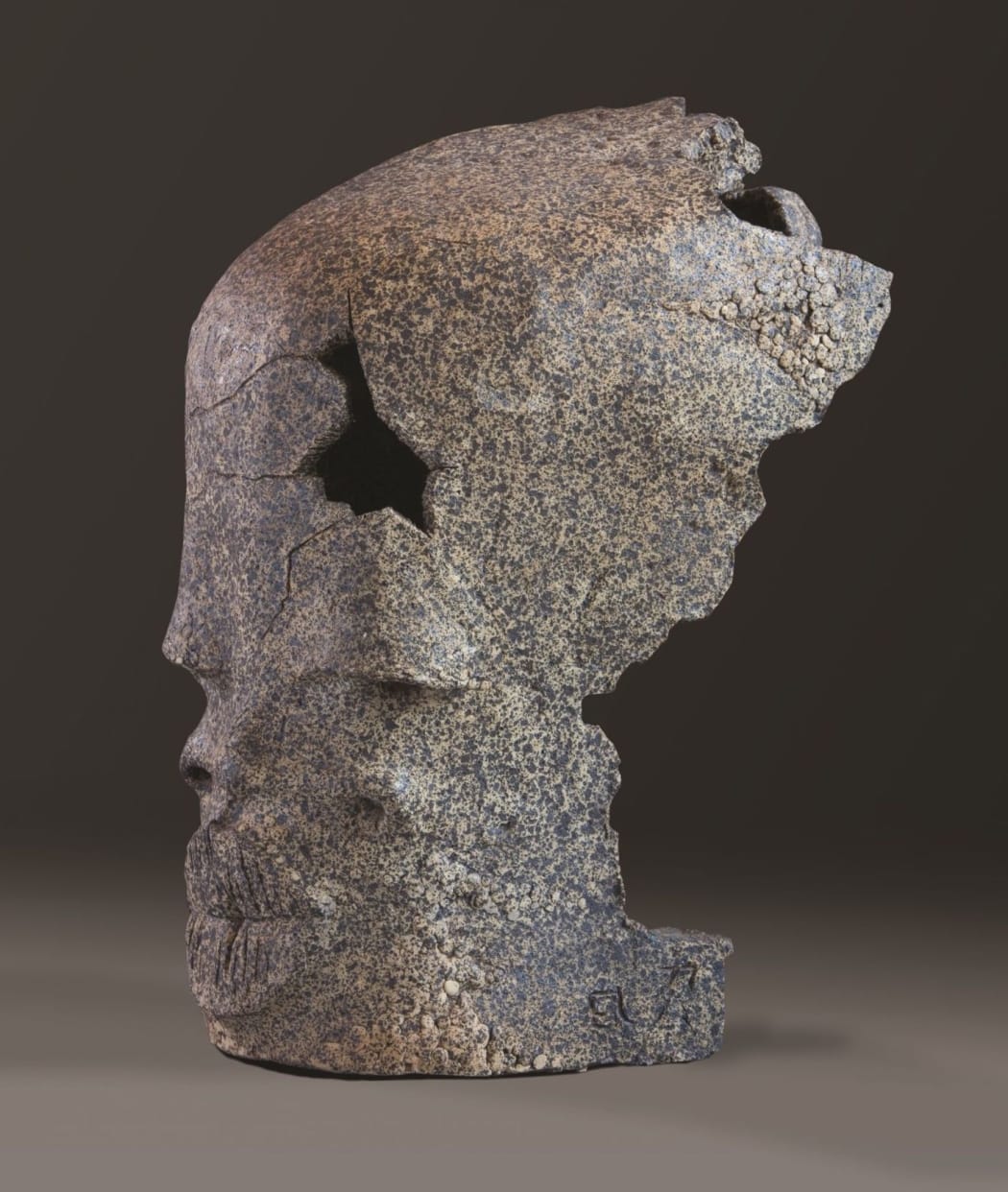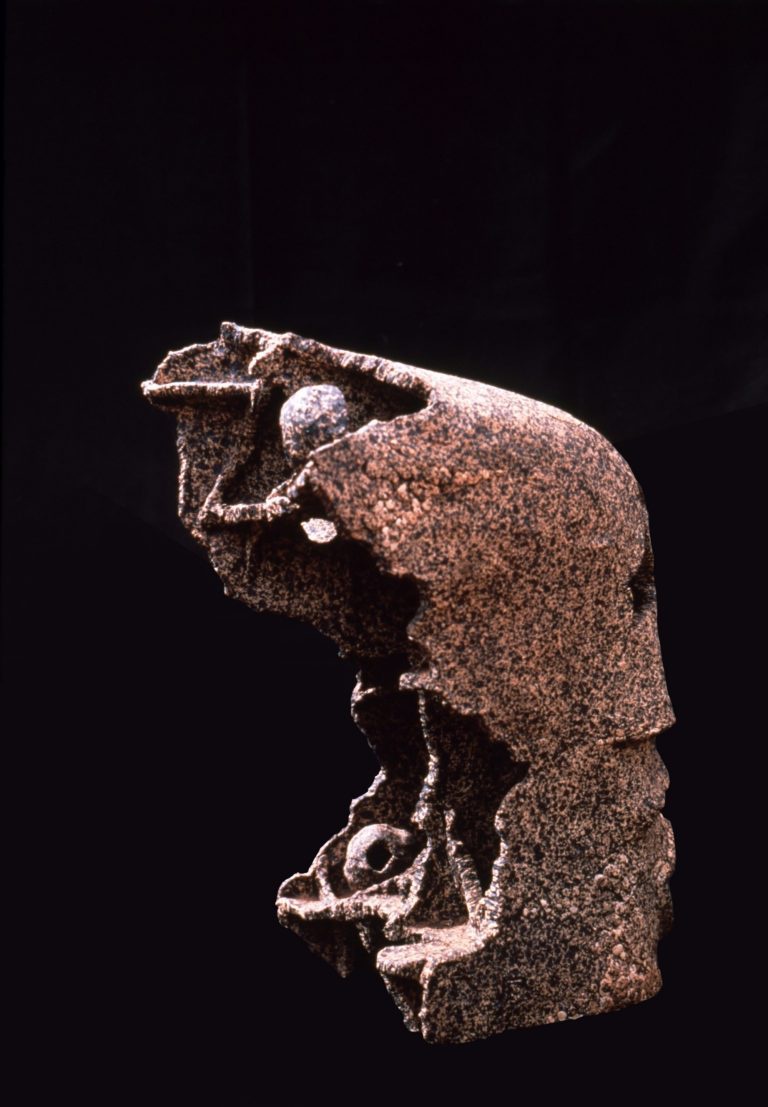
Among the first works El Anatsui created after moving from Ghana to Nsukka, Nigeria, was the above “Chambers of Memory” (1977). Aficionados of traditional African terracotta works of art surely immediately recognise a strong influence from the famed Nok heads. Indeed, with the typical facial features and its large bald forehead, El Anatsui fashioned this sculpture to resemble a terra-cotta head from Nigeria’s Nok culture. Arriving in Nigeria in 1975 to teach at the University of Nsukka, he had started to immerse himself in local styles and became fascinated by Nigeria’s national museums and archeological sites. The art of the so-called Nok, the only remnant of the civilisation that created these works, became a strong influence on his early work. The genius of the artist came into play with the creation of the empty chambers on the inside of the head, visible at the back (see below). The interior divisions he created allude to the sites of memory archived in man’s mind. With its empty chambers, the work in that way can be seen as a reflection on collective memory and humanity’s inability to learn from its mistakes. After all, we are for example still clueless what happened with the Nok civilisation, a culture so forgotten we don’t even remember its real name. I like how the artist, inspired by this specific case, made this universal and timeless message. And, also for collectors of classical African art, it does add a new layer of meaning when admiring traditional African terracotta sculptures.
Long before he would get famous with his hanging metal tapestries, El Anatsui thus was already pushing boundaries as an artist. If you are not familiar with his work, please read the brilliant article The New Yorker recently published about him here.

© El Anatsui. Courtesy of the artist.